Electronic configuration is a basic concept in chemistry, essential for students studying for the IGCSE exam. It refers to the distribution of electrons in an atom’s orbitals, and understanding it is crucial for grasping how elements interact and form compounds.
In IGCSE Chemistry, understanding the concept of electronic configuration is crucial for atomic structure and chemical interactions. Electronic configuration describes the precise distribution of electrons in an atom or ion, and understanding it is essential for grasping how elements interact and form compounds.
Understanding Atomic Structure
Atoms consist of three main subatomic particles:
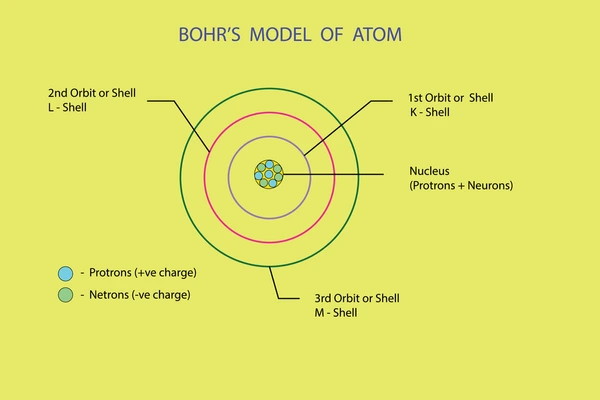
Electron shell diagram
- Protons – Positively charged particles found in the nucleus.
- Neutrons – Neutral particles found in the nucleus that contribute to the atom’s mass but do not carry an electric charge.
- Electrons – Negatively charged particles orbiting the nucleus in energy levels or shells.
An element’s atomic number corresponds to the count of protons in its nucleus, whereas the mass number represents the combined total of protons and neutrons present.
Principles of Electronic Configuration
Electrons are distributed in energy levels, also known as shells, surrounding the nucleus. Each shell has a defined electron-holding capacity:
- First shell (K shell): Maximum 2 electrons
- Second shell (L shell): Maximum 8 electrons
- Third shell (M shell): Maximum 18 electrons, but we consider up to 8 electrons in IGCSE for simplicity.
- Fourth shell (N shell): Maximum 32 electrons
Electrons fill the lowest energy level available first, adhering to the Aufbau principle to ensure stability., adhering to the Aufbau principle to ensure stability.
How to Write Electronic Configuration
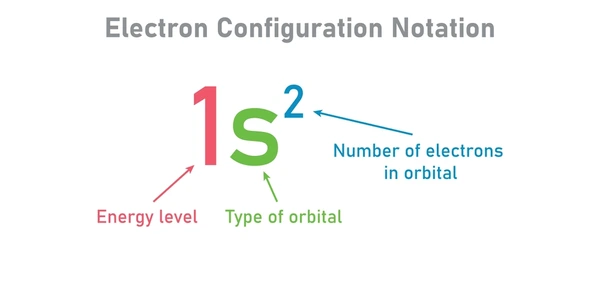
To establish the electronic configuration of an element, one must first identify its atomic number, which indicates the number of electrons present. For example, carbon, with an atomic number of 6, has its electron arrangement denoted as 1s² 2s² 2p². This representation shows that there are two electrons in the 1s subshell, two in the 2s subshell, and two in the 2p subshell.
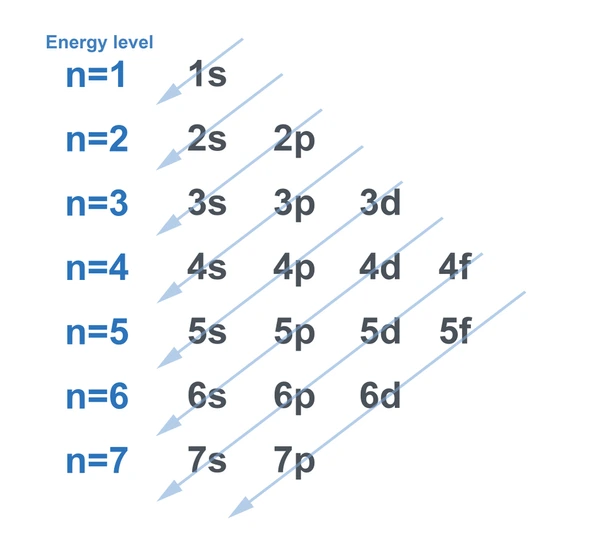
Example 1: Hydrogen (H) – Atomic Number 1
Electronic configuration: 1
Example 2: Oxygen (O) – Atomic Number 8
Electronic configuration: 2,6
Example 3: Sodium (Na) – Atomic Number 11
Electronic configuration: 2,8,1
Example 4: Calcium (Ca) – Atomic Number 20
Electronic configuration: 2,8,8,2
Electron Configuration of the First 20 Elements
| Element | Atomic Number | Electronic Configuration |
|---|---|---|
| Hydrogen | 1 | 1 |
| Helium | 2 | 2 |
| Lithium | 3 | 2,1 |
| Beryllium | 4 | 2,2 |
| Boron | 5 | 2,3 |
| Carbon | 6 | 2,4 |
| Nitrogen | 7 | 2,5 |
| Oxygen | 8 | 2,6 |
| Fluorine | 9 | 2,7 |
| Neon | 10 | 2,8 |
| Sodium | 11 | 2,8,1 |
| Magnesium | 12 | 2,8,2 |
| Aluminium | 13 | 2,8,3 |
| Silicon | 14 | 2,8,4 |
| Phosphorus | 15 | 2,8,5 |
| Sulfur | 16 | 2,8,6 |
| Chlorine | 17 | 2,8,7 |
| Argon | 18 | 2,8,8 |
| Potassium | 19 | 2,8,8,1 |
| Calcium | 20 | 2,8,8,2 |
Noble Gas Configuration and Stability
The noble gases (Group 18) have filled outer shells, making them stable and unreactive:
- Neon (Ne) – 2,8
- Argon (Ar) – 2,8,8
Elements tend to gain, lose, or share electrons to achieve a noble gas configuration, forming ions and covalent bonds.
Electron Configuration and Chemical Reactivity
The outermost shell (valence shell) determines an element’s chemical properties:
- Metals (e.g., Na, Mg, Ca) have 1-3 electrons in the outer shell and tend to lose electrons to form positive ions (cations).
- Non-metals (e.g., O, Cl, N) have 5-7 electrons in the outer shell and tend to gain electrons to form negative ions (anions).
- Elements with a full outer shell (e.g., Ne, Ar) are inert and do not easily react.
Ions and Their Electronic Configuration
Atoms that gain or lose electrons transform into ions, resulting in modified electronic configurations that influence their chemical properties and reactivity:
Example 1: Sodium Ion (Na⁺)
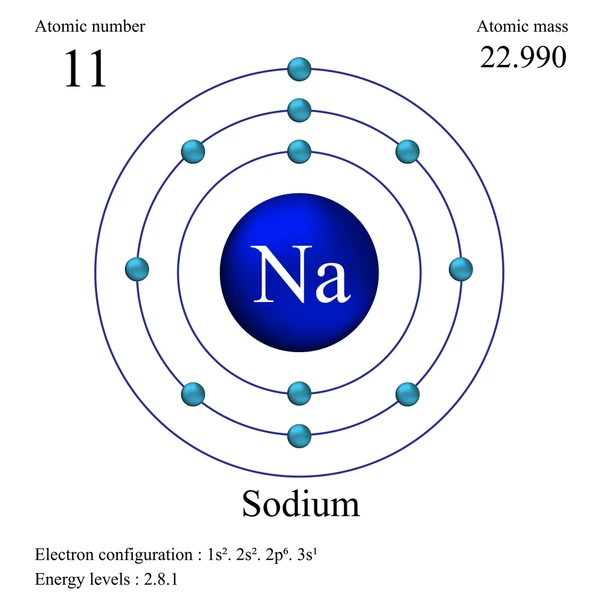
- Sodium atom: 2,8,1
- Loses 1 electron → Na⁺: 2,8 (same as neon)
Example 2: Chloride Ion (Cl⁻)
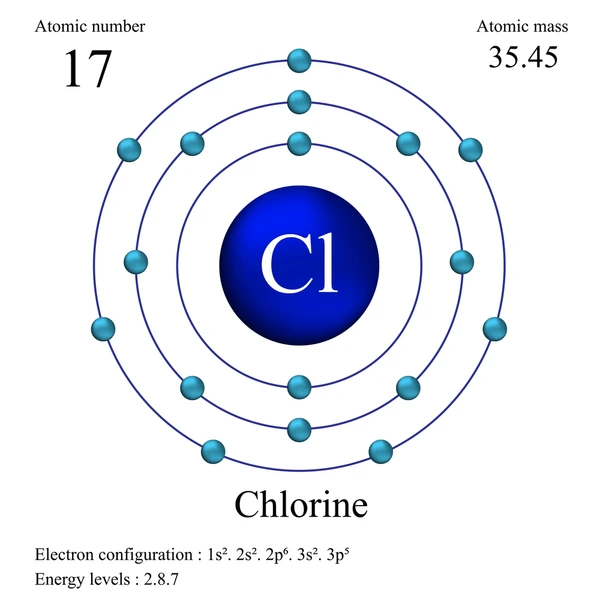
- Chlorine atom: 2,8,7
- Gains 1 electron → Cl⁻: 2,8,8 (same as argon)
Electronic Configuration and Periodic Table Trends
The relationship between the electronic configurations and the periodic table.
- Group number: Number of valence electrons (e.g., Group 1 = 1 valence electron, Group 2 = 2 valence electrons).
- Period number: Number of occupied electron shells (e.g., Period 3 elements have three shells).
The position of magnesium on the periodic table

Magnesium (Mg) – Group 2, Period 3

- Electronic configuration: 2,8,2
- 2 valence electrons → Group 2
- 3 shells → Period 3
Final thought
Understanding electron configuration is fundamental in IGCSE Chemistry, as it explains the reactivity, bonding, and chemical properties of elements. By mastering electronic arrangements, students can predict ion formation, periodic trends, and the behavior of elements in chemical reactions.
What are the principles of electronic configuration?
First shell (K shell): Maximum 2 electrons
Second shell (L shell): Maximum 8 electrons
Third shell (M shell): Maximum 18 electrons, but we consider up to 8 electrons in IGCSE for simplicity.
Fourth shell (N shell): Maximum 32 electrons
Electrons fill the lowest energy level available first, adhering to the Aufbau principle to ensure stability., adhering to the Aufbau principle to ensure stability.
Protons – Positively charged particles found in the nucleus.
Neutrons – Neutral particles found in the nucleus that contribute to the atom’s mass but do not carry an electric charge.
Electrons – Negatively charged particles orbiting the nucleus in energy levels or shells.
An element’s atomic number corresponds to the count of protons in its nucleus, whereas the mass number represents the combined total of protons and neutrons present.
Principles of Electronic Configuration
Electrons are distributed in energy levels, also known as shells, surrounding the nucleus. Each shell has a defined electron-holding capacity:
First shell (K shell): Maximum 2 electrons
Second shell (L shell): Maximum 8 electrons
Third shell (M shell): Maximum 18 electrons, but we consider up to 8 electrons in IGCSE for simplicity.
Fourth shell (N shell): Maximum 32 electrons
Electrons fill the lowest energy level available first, adhering to the Aufbau principle to ensure stability., adhering to the Aufbau principle to ensure stability.
How to Write Electronic Configuration?
To establish the electronic configuration of an element, one must first identify its atomic number, which indicates the number of electrons present. For example, carbon, with an atomic number of 6, has its electron arrangement denoted as 1s² 2s² 2p². This representation shows that there are two electrons in the 1s subshell, two in the 2s subshell, and two in the 2p subshell.
Explain Electronic Configuration and Periodic Table Trends.
The relationship between the electronic configurations and the periodic table.
Group number: Number of valence electrons (e.g., Group 1 = 1 valence electron, Group 2 = 2 valence electrons).
Period number: Number of occupied electron shells (e.g., Period 3 elements have three shells).
The outermost shell (valence shell) determines an element’s chemical properties:
Metals (e.g., Na, Mg, Ca) have 1-3 electrons in the outer shell and tend to lose electrons to form positive ions (cations).
Non-metals (e.g., O, Cl, N) have 5-7 electrons in the outer shell and tend to gain electrons to form negative ions (anions).
Elements with a full outer shell (e.g., Ne, Ar) are inert and do not easily react.
How to Write Electronic Configuration?
Example 1: Hydrogen (H) – Atomic Number 1
Electronic configuration: 1
Example 2: Oxygen (O) – Atomic Number 8
Electronic configuration: 2,6
Example 3: Sodium (Na) – Atomic Number 11
Electronic configuration: 2,8,1
Example 4: Calcium (Ca) – Atomic Number 20
Electronic configuration: 2,8,8,2
What are the Principles of Electronic Configuration
First shell (K shell): Maximum 2 electrons
Second shell (L shell): Maximum 8 electrons
Third shell (M shell): Maximum 18 electrons, but we consider up to 8 electrons in IGCSE for simplicity.
Fourth shell (N shell): Maximum 32 electrons
Electrons fill the lowest energy level available first, adhering to the Aufbau principle to ensure stability., adhering to the Aufbau principle to ensure stability.
Example 1: Hydrogen (H) – Atomic Number 1
Electron configuration: 1
Example 2: Oxygen (O) – Atomic Number 8
Electron configuration: 2,6
Example 3: Sodium (Na) – Atomic Number 11
Electron configuration: 2,8,1
Example 4: Calcium (Ca) – Atomic Number 20
Electron configuration: 2,8,8,2
How to Write Electronic Configuration of different elements?
Example 1: Hydrogen (H) – Atomic Number 1
Electron configuration: 1
Example 2: Oxygen (O) – Atomic Number 8
Electron configuration: 2,6
Example 3: Sodium (Na) – Atomic Number 11
Electron configuration: 2,8,1
Example 4: Calcium (Ca) – Atomic Number 20
Electron configuration: 2,8,8,2
What are the first 20 elements and their electronic configuration?
| Element | Atomic Number | Electronic Configuration |
|---|---|---|
| Hydrogen | 1 | 1 |
| Helium | 2 | 2 |
| Lithium | 3 | 2,1 |
| Beryllium | 4 | 2,2 |
| Boron | 5 | 2,3 |
| Carbon | 6 | 2,4 |
| Nitrogen | 7 | 2,5 |
| Oxygen | 8 | 2,6 |
| Fluorine | 9 | 2,7 |
| Neon | 10 | 2,8 |
| Sodium | 11 | 2,8,1 |
| Magnesium | 12 | 2,8,2 |
| Aluminium | 13 | 2,8,3 |
| Silicon | 14 | 2,8,4 |
| Phosphorus | 15 | 2,8,5 |
| Sulfur | 16 | 2,8,6 |
| Chlorine | 17 | 2,8,7 |
| Argon | 18 | 2,8,8 |
| Potassium | 19 | 2,8,8,1 |
| Calcium | 20 | 2,8,8,2 |
Write the Electronic Configuration and Chemical Reactivity.
The outermost shell (valence shell) determines an element’s chemical properties:
Metals (e.g., Na, Mg, Ca) have 1-3 electrons in the outer shell and tend to lose electrons to form positive ions (cations).
Non-metals (e.g., O, Cl, N) have 5-7 electrons in the outer shell and tend to gain electrons to form negative ions (anions).
Elements with a full outer shell (e.g., Ne, Ar) are inert and do not easily react.
Ions and Their Electronic Configuration
Atoms that gain or lose electrons transform into ions, resulting in modified electronic configurations that influence their chemical properties and reactivity:
Example 1: Sodium Ion (Na⁺)

Sodium atom: 2,8,1
Loses 1 electron → Na⁺: 2,8 (same as neon)
Example 2: Chloride Ion (Cl⁻)

Chlorine atom: 2,8,7
Gains 1 electron → Cl⁻: 2,8,8 (same as argon)
Electronic Configuration and Periodic Table Trends
The relationship between the electronic configurations and the periodic table.
Group number: Number of valence electrons (e.g., Group 1 = 1 valence electron, Group 2 = 2 valence electrons).
Period number: Number of occupied electron shells (e.g., Period 3 elements have three shells).
The position of magnesium on the periodic table

Magnesium (Mg) – Group 2, Period 3

Electronic configuration: 2,8,2
2 valence electrons → Group 2
3 shells → Period 3
What is an atomic structure in IGCSE chemistry?
Atoms consist of three main subatomic particles:

Electron shell diagram
Protons – Positively charged particles found in the nucleus.
Neutrons – Neutral particles found in the nucleus that contribute to the atom’s mass but do not carry an electric charge.
Electrons – Negatively charged particles orbiting the nucleus in energy levels or shells.
An element’s atomic number corresponds to the count of protons in its nucleus, whereas the mass number represents the combined total of protons and neutrons present.
Principles of Electronic Configuration
Electrons are distributed in energy levels, also known as shells, surrounding the nucleus. Each shell has a defined electron-holding capacity:
First shell (K shell): Maximum 2 electrons
Second shell (L shell): Maximum 8 electrons
Third shell (M shell): Maximum 18 electrons, but we consider up to 8 electrons in IGCSE for simplicity.
Fourth shell (N shell): Maximum 32 electrons
Electrons fill the lowest energy level available first, adhering to the Aufbau principle to ensure stability., adhering to the Aufbau principle to ensure stability.
What is electronic configuration class 9?
In IGCSE Chemistry, understanding the concept of electronic configuration is crucial for atomic structure and chemical interactions. Electronic configuration describes the precise distribution of electron arrangement in an atom or ion, and understanding it is essential for grasping how elements interact and form compounds.
Understanding Atomic Structure
Atoms consist of three main subatomic particles:

Electron shell diagram
Protons – Positively charged particles found in the nucleus.
Neutrons – Neutral particles found in the nucleus that contribute to the atom’s mass but do not carry an electric charge.
Electrons – Negatively charged particles orbiting the nucleus in energy levels or shells.
An element’s atomic number corresponds to the count of protons in its nucleus, whereas the mass number represents the combined total of protons and neutrons present.
Principles of Electronic Configuration
Electrons are distributed in energy levels, also known as shells, surrounding the nucleus. Each shell has a defined electron-holding capacity:
First shell (K shell): Maximum 2 electrons
Second shell (L shell): Maximum 8 electrons
Third shell (M shell): Maximum 18 electrons, but we consider up to 8 electrons in IGCSE for simplicity.
Fourth shell (N shell): Maximum 32 electrons
Electrons fill the lowest energy level available first, adhering to the Aufbau principle to ensure stability., adhering to the Aufbau principle to ensure stability.
How to Write Electronic Configuration

To establish the electronic configuration of an element, one must first identify its atomic number, which indicates the number of electrons present. For example, carbon, with an atomic number of 6, has its electron arrangement denoted as 1s² 2s² 2p². This representation shows that there are two electrons in the 1s subshell, two in the 2s subshell, and two in the 2p subshell.

Example 1: Hydrogen (H) – Atomic Number 1
Electronic configuration: 1
Example 2: Oxygen (O) – Atomic Number 8
Electronic configuration: 2,6
Example 3: Sodium (Na) – Atomic Number 11
Electronic configuration: 2,8,1
Example 4: Calcium (Ca) – Atomic Number 20
Electronic configuration: 2,8,8,2
Electron Configuration of the First 20 Elements
| Element | Atomic Number | Electronic Configuration |
|---|---|---|
| Hydrogen | 1 | 1 |
| Helium | 2 | 2 |
| Lithium | 3 | 2,1 |
| Beryllium | 4 | 2,2 |
| Boron | 5 | 2,3 |
| Carbon | 6 | 2,4 |
| Nitrogen | 7 | 2,5 |
| Oxygen | 8 | 2,6 |
| Fluorine | 9 | 2,7 |
| Neon | 10 | 2,8 |
| Sodium | 11 | 2,8,1 |
| Magnesium | 12 | 2,8,2 |
| Aluminium | 13 | 2,8,3 |
| Silicon | 14 | 2,8,4 |
| Phosphorus | 15 | 2,8,5 |
| Sulfur | 16 | 2,8,6 |
| Chlorine | 17 | 2,8,7 |
| Argon | 18 | 2,8,8 |
| Potassium | 19 | 2,8,8,1 |
| Calcium | 20 | 2,8,8,2 |
The noble gases (Group 18) have filled outer shells, making them stable and unreactive:
Neon (Ne) – 2,8
Argon (Ar) – 2,8,8
Elements tend to gain, lose, or share electrons to achieve a noble gas configuration, forming ions and covalent bonds.
Electron Configuration and Chemical Reactivity
The outermost shell (valence shell) determines an element’s chemical properties:
Metals (e.g., Na, Mg, Ca) have 1-3 electrons in the outer shell and tend to lose electrons to form positive ions (cations).
Non-metals (e.g., O, Cl, N) have 5-7 electrons in the outer shell and tend to gain electrons to form negative ions (anions).
Elements with a full outer shell (e.g., Ne, Ar) are inert and do not easily react.
Ions and Their Electronic Configuration
Atoms that gain or lose electrons transform into ions, resulting in modified electronic configurations that influence their chemical properties and reactivity:
Example 1: Sodium Ion (Na⁺)

Sodium atom: 2,8,1
Loses 1 electron → Na⁺: 2,8 (same as neon)
Example 2: Chloride Ion (Cl⁻)

Chlorine atom: 2,8,7
Gains 1 electron → Cl⁻: 2,8,8 (same as argon)
Electronic Configuration and Periodic Table Trends
The relationship between the electronic configurations and the periodic table.
Group number: Number of valence electrons (e.g., Group 1 = 1 valence electron, Group 2 = 2 valence electrons).
Period number: Number of occupied electron shells (e.g., Period 3 elements have three shells).
The position of magnesium on the periodic table

Magnesium (Mg) – Group 2, Period 3

Electronic configuration: 2,8,2
2 valence electrons → Group 2
3 shells → Period 3
Final thought
Understanding electron configuration is fundamental in IGCSE Chemistry, as it explains the reactivity, bonding, and chemical properties of elements. By mastering electronic arrangements, students can predict ion formation, periodic trends, and the behavior of elements in chemical reactions.

5 thoughts on “Electronic Configuration IGCSE Chemistry”